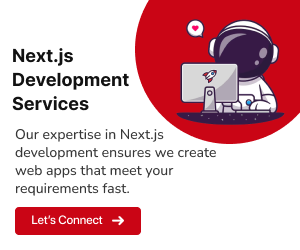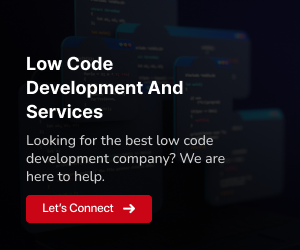React Native is a popular framework for cross-platform mobile app development. It allows developers to build native-looking iOS and Android apps using a single codebase, JavaScript. A React Native UI library is a collection of pre-built components that can be used to create the user interface of a React Native app. These libraries typically include a wide range of components, such as buttons, forms, navigation elements, and more.
There are many benefits to using a React Native UI library.
First, they can save developers a lot of time and effort. By using pre-built components, developers don’t have to spend time designing and implementing their own UI elements.
Second, React Native UI libraries are often designed to be visually consistent and easy to use. This can help to improve the user experience of your app.
Third, many React Native UI libraries are open source and actively maintained. This means that you can rely on them to be up-to-date with the latest features and best practices.
Top 10 React Native UI Libraries of 2023-24
React Native Elements:
React Native Elements is a popular open-source UI library for React Native. It provides a wide range of pre-built components, including buttons, forms, navigation elements, and more. Moreover, react Native Elements is known for its clean and simple design, as well as its ease of use.
Key Features
- Cross-platform compatibility: React Native Elements components work on both iOS and Android, making it easy to create an app that looks great on all devices.
- Customizable themes: React Native Elements allows you to customize the look and feel of your app by creating your own themes.
- Wide range of components: React Native Elements includes a wide range of pre-built components, including buttons, forms, navigation elements, and more.
- Easy to use: React Native Elements is designed to be easy to use, even for beginners.
Pros
- Clean and simple design
- Easy to use
- Wide range of components
- Cross-platform compatibility
- Customizable themes
Cons
- Some components may be too simple for some needs
- Community support is not as good as some other libraries
NativeBase:
NativeBase is another popular open-source UI library for React Native. It provides a wide range of pre-built components, as well as a powerful theming system. NativeBase is known for its flexibility and its ability to create custom UI elements.
Key Features
- Cross-platform compatibility: NativeBase components work on both iOS and Android, making it easy to create an app that looks great on all devices.
- Powerful theming system: NativeBase allows you to customize the look and feel of your app with its powerful theming system.
- Wide range of components: NativeBase includes a wide range of pre-built components, as well as the ability to create custom UI elements.
Pros
- Powerful theming system
- Flexible and extensible
- Wide range of components
- Cross-platform compatibility
Cons
- Can be complex to learn
- Community support is not as good as some other libraries
Ignite UI for React Native:
Ignite UI for React Native is a comprehensive UI library that provides over 100 components for building data-rich, responsive web applications in React Native. It includes a wide range of components, such as data grids, data charts, layout managers, data entry & calendar controls, to help teams build app experiences faster.
Key features
- Comprehensive set of UI components for building data-rich, responsive web applications
- High performance and scalability
- Easy to use and customize
- Well-documented and supported
Pros
- Comprehensive set of features
- High performance and scalability
- Easy to use and customize
- Well-documented and supported
Cons
- Can be expensive
- Some users have reported performance issues with complex applications
Shoutem UI:
Shoutem UI is a free and open-source UI library for React Native. It provides a set of pre-built components that can be used to create native-looking iOS and Android apps.
Key features
- Wide range of pre-built components
- Easy to use and customize
- Built-in theming system
- Well-documented and supported
Pros
- Free and open-source
- Wide range of pre-built components
- Easy to use and customize
- Built-in theming system
- Well-documented and supported
Cons
- Limited community support
- Not as comprehensive as some other UI libraries
Galio:
Galio is a React Native UI library that is designed to be lightweight and easy to use. It offers a variety of pre-built components that can be used to create beautiful and responsive user interfaces.
Key features
- Lightweight and fast
- Easy to use and customize
- Wide range of pre-built components
- Supports themes
- Supports responsive design
Pros
- Easy to learn and use
- Lightweight and fast
- Highly customizable
- Good community support
Cons
- Smaller community than some other React Native UI libraries
Material UI:
Material UI is a React Native UI library that is based on Google’s Material Design. It offers a wide range of pre-built components that can be used to create user interfaces that are consistent with Google’s design guidelines.
Key features
/p>
- Based on Google’s Material Design
- Wide range of pre-built components
- Supports themes
- Supports responsive design
- Good documentation and community support
Pros/h4>
- Large community and good support
- Wide range of pre-built components
- Components are well-designed and consistent with Google’s Material Design guidelines
Cons
- Can be complex to learn and use
- Some components are heavy and can impact performance
- Less customizable than some other libraries
Ant Design Mobile:
Ant Design Mobile is a React Native UI library developed by Ant Group, the creators of Ant Design, a popular UI design system for web applications. Ant Design Mobile is a comprehensive UI library that includes a wide range of components, such as buttons, forms, navigation elements, and more.
Key Features
- Comprehensive set of components
- Customizable themes
- Internationalization support
- Accessibility support
- Active community support
Pros
- Large community of users and contributors
- Well-documented
- Comprehensive set of features
- Customizable and extensible
- Free to use
Cons
- Some components can be complex to use
- Can be slow on some devices
- Not as many third-party components available as some other libraries
Onsen UI:
Onsen UI is a hybrid mobile development framework that allows developers to build native-looking iOS and Android apps using HTML, CSS, and JavaScript. Onsen UI includes a wide range of UI components, such as buttons, forms, navigation elements, and more.
Key Features
- Native-looking iOS and Android apps
- Web-based development
- Material UI design
- Accessibility support
- Active community support
Pros
- Fast and performant
- Easy to use
- Large community of users and contributors
- Well-documented
- Free to use
Cons
- Not as many third-party components available as some other frameworks
- Can be difficult to debug
- Not as well-suited for complex apps
React Native UI Kitten:
React Native UI Kitten is a React Native UI library that is designed to be customizable and reusable. It is based on the Eva design system, which provides a set of guidelines for creating consistent and user-friendly UI elements.
Key features
- Theming support: UI Kitten provides strong theming support, allowing you to easily change the look and feel of your app.
- Customization options: UI Kitten components are highly customizable, allowing you to create a unique and personalized UI for your app.
- Performance: UI Kitten components are optimized for performance, making them a good choice for production-ready apps.
Pros
- Customizable and reusable: UI Kitten components are highly customizable and reusable, which can save you a lot of time and effort when developing your app.
- Well-documented: UI Kitten is well-documented, with clear and concise documentation that makes it easy to get started.
- Active community: UI Kitten has a large and active community, which means that there is plenty of support available if you need help.
Cons
- Smaller community than other React Native UI libraries: UI Kitten has a smaller community than some other React Native UI libraries, such as React Native Elements and NativeBase. This means that there may be fewer resources available, such as tutorials and plugins.
- Steeper learning curve: UI Kitten can be more difficult to learn than some other React Native UI libraries. This is because it offers more customization options and features.
React Native Paper:
React Native Paper is a React Native UI library that is designed to implement the Material Design specification. Material Design is a set of guidelines for designing beautiful and user-friendly interfaces.
Key features
- Material Design implementation: React Native Paper provides a complete implementation of the Material Design specification. This means that you can easily create apps with a consistent and user-friendly UI.
- Wide range of components: React Native Paper offers a wide range of components, including buttons, forms, navigation elements, and more.
- Performance: React Native Paper components are optimized for performance, making them a good choice for production-ready apps.
Pros
- Material Design implementation: React Native Paper provides a complete implementation of the Material Design specification. This means that you can easily create apps with a consistent and user-friendly UI.
- Wide range of components: React Native Paper offers a wide range of components, including buttons, forms, navigation elements, and more.
- Performance: React Native Paper components are optimized for performance, making them a good choice for production-ready apps.
Cons
- Smaller community than other React Native UI libraries: React Native Paper has a smaller community than some other React Native UI libraries, such as React Native Elements and NativeBase. This means that there may be fewer resources available, such as tutorials and plugins.
- Steeper learning curve: React Native Paper can be more difficult to learn than some other React Native UI libraries. This is because it offers more customization options and features.
Considerations for Choosing a UI Library
When choosing a UI library, there are a number of factors to consider, including:
- The type of app you are building: Some libraries are better suited for certain types of apps than others. For example, if you are building a business app, you may want to choose a library that offers a variety of professional-looking components.
- The target audience: If you are targeting a specific audience, such as designers or developers, you may want to choose a library that is popular with that audience.
- Your budget: Some libraries are free to use, while others require a paid subscription. Choose a library that fits your budget.
- The level of customization you need: Some libraries are more customizable than others. If you need to be able to heavily customize the look and feel of your UI, you may want to choose a more customizable library.
- The performance of the library: It is important to choose a library that is performant and will not slow down your app.
- The size and activity of the community: A large and active community can be a valuable resource for troubleshooting problems and getting help.
Conclusion
React Native UI libraries can be a great way to save time and effort when building mobile apps. By using pre-built components, you can focus on the business logic of your app and leave the UI design to the experts. There are many different React Native UI libraries available, each with its own strengths and weaknesses. It is important to choose the right library for your specific needs. When choosing a UI library, consider the type of app you are building, the target audience, your budget, the level of customization you need, the performance of the library, and the size and activity of the community.
One popular React Native UI library is NativeBase, which is created by GeekyAnts. NativeBase is a comprehensive UI library that offers a wide range of components, including buttons, forms, navigation elements, and more. It is also highly customizable and performance-optimized. GeekyAnts is a team of React Native experts who are passionate about building high-quality mobile apps. They offer a variety of services, including app development, design, and consulting. If you are looking for a React Native UI library that is comprehensive, customizable, and performant, then NativeBase is a great option. And if you need help building or designing your React Native app, GeekyAnts is a great team to work with.Get in touch.

























